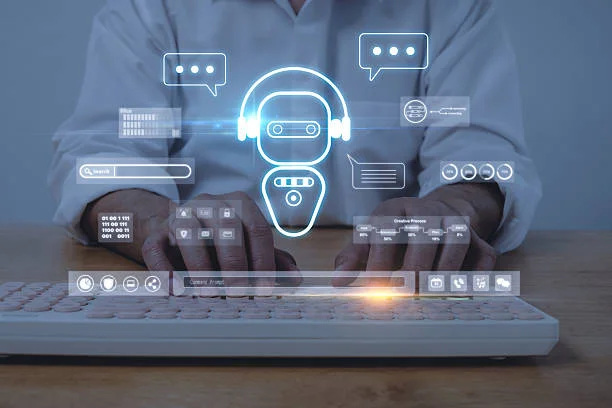The digital transformation of customer service has been accelerated by the widespread adoption of artificial intelligence, with chatbots emerging as a cornerstone technology for modern businesses. Today’s customers expect instant, personalized, and round-the-clock support, making traditional customer service models increasingly inadequate. Chatbots have evolved from simple rule-based systems to sophisticated AI-powered assistants capable of handling complex customer interactions with remarkable efficiency.
Modern chatbots are revolutionizing how businesses interact with their customers across multiple touchpoints. Organizations are discovering innovative use cases for chatbots that extend far beyond basic customer support. These intelligent systems now provide personalized recommendations, process transactions, schedule appointments, and offer emotional support to users.
The implementation of chatbots in customer service represents a strategic shift toward automation that enhances rather than replaces human interaction. By handling routine inquiries and initial customer contact, chatbots free up human agents to focus on complex issues that require empathy, creativity, and critical thinking. This symbiotic relationship between artificial intelligence and human expertise creates a more efficient and satisfying customer experience.
According to recent industry research, businesses implementing chatbot technology report significant improvements in customer satisfaction scores, with response times reduced by up to 90% and operational costs decreased by 30-40%. The technology has matured to the point where customers often prefer chatbot interactions for simple queries due to their consistency, availability, and speed of resolution.
The Evolution of Customer Service Chatbots
From Rule-Based to AI-Powered Systems
The journey of chatbots in customer service began with simple rule-based systems that could only respond to specific keywords and phrases. These early versions were limited in their capabilities and often frustrated users with their inability to understand context or handle variations in language. However, the integration of natural language processing (NLP) and machine learning algorithms has transformed these basic tools into sophisticated conversational agents.
Modern AI-powered chatbots leverage advanced technologies including:
- Natural Language Understanding (NLU) for comprehending user intent and context
- Machine Learning algorithms that improve responses based on previous interactions
- Sentiment analysis to detect customer emotions and adjust responses accordingly
- Multi-language support for global customer bases
- Integration capabilities with CRM systems, databases, and third-party applications
Current Market Landscape
The chatbot market has experienced exponential growth, with the global chatbot market size expected to reach $20.81 billion by 2029, growing at a CAGR of 19.29% from 2024 to 2029. This growth is driven by increasing customer expectations for immediate support, the need for cost-effective customer service solutions, and advances in AI technology.
Leading technology companies and specialized development firms like CHI Software have emerged as key players in this space, offering comprehensive chatbot development services that cater to diverse industry needs. These experts understand that successful chatbot implementation requires more than just technology – it demands a deep understanding of customer psychology, business processes, and industry-specific requirements.
Key Benefits of Implementing Chatbots in Customer Service
24/7 Availability and Instant Response
One of the most significant advantages of chatbots is their ability to provide continuous customer support without the constraints of business hours or geographical limitations. Customers can receive immediate assistance at any time, leading to higher satisfaction rates and reduced abandonment of service requests. Implementing a dedicated chatbot for website integration can be the most common way businesses can achieve this level of chatbot.
Quantifiable benefits include:
| Metric | Improvement with Chatbots |
| Average Response Time | Reduced from 12 hours to under 1 minute |
| Customer Wait Time | Eliminated for initial contact |
| After-Hours Support Requests | 100% coverage |
| First Contact Resolution | Increased by 67% |
Cost Efficiency and Scalability
Chatbots significantly reduce operational costs by automating routine customer interactions. A single chatbot can handle thousands of simultaneous conversations, compared to human agents who can typically manage only one or two interactions at a time. This scalability makes chatbots particularly valuable during peak periods or promotional campaigns when customer inquiry volumes spike dramatically.
The cost savings are substantial:
- Reduced staffing requirements for basic inquiries
- Lower training costs compared to human agents
- Decreased infrastructure needs for call centers
- Minimized errors in information delivery
Enhanced Customer Experience Through Personalization
Modern chatbots can access customer data and interaction history to provide personalized experiences. By integrating with CRM systems and customer databases, chatbots can:
- Address customers by name and reference previous interactions
- Provide tailored product recommendations based on purchase history
- Offer personalized troubleshooting solutions
- Remember customer preferences for future interactions
- Escalate complex issues to human agents with complete context
Continue your journey: This related article is worth your time.
Best Practices for Chatbot Implementation
Designing Conversational Flows
Effective chatbot design requires careful planning of conversational flows that mirror natural human communication patterns. The best chatbots are designed with clear objectives, well-defined user journeys, and fallback options for unexpected scenarios.
Essential design principles:
- Keep initial interactions simple – Start with basic questions to understand user intent
- Provide clear menu options – Give users multiple ways to express their needs
- Use progressive disclosure – Reveal information gradually to avoid overwhelming users
- Include escape hatches – Always provide options to reach human agents
- Test extensively – Validate conversational flows with real users before deployment
Integration with Existing Systems
Successful chatbot implementation requires seamless integration with existing customer service infrastructure. This includes:
- CRM systems for accessing customer data and updating interaction records
- Help desk software for ticket creation and tracking
- Knowledge bases for accessing up-to-date information and procedures
- Payment processing systems for handling transactions
- Analytics platforms for monitoring performance and gathering insights
Training and Continuous Improvement
Chatbot effectiveness depends heavily on initial training data and ongoing optimization. Organizations should:
- Compile comprehensive FAQ databases and customer interaction histories
- Regularly review chatbot conversations to identify improvement opportunities
- Update knowledge bases with new products, services, and policies
- Monitor customer feedback and satisfaction scores
- Implement A/B testing for different response strategies
Current Trends Shaping Chatbot Technology
Voice-Enabled Chatbots and Omnichannel Integration
The convergence of voice technology with text-based chatbots is creating new opportunities for customer engagement. Voice-enabled chatbots allow customers to interact naturally through speech, making the technology accessible to users who may struggle with typing or prefer verbal communication.
Omnichannel integration ensures consistent customer experiences across multiple touchpoints:
- Website chat widgets
- Mobile applications
- Social media platforms (Facebook Messenger, WhatsApp, Telegram)
- Voice assistants (Alexa, Google Assistant)
- SMS and email integration
AI and Machine Learning Advancements
Recent developments in artificial intelligence are pushing the boundaries of what chatbots can accomplish:
Emotional Intelligence: Advanced sentiment analysis allows chatbots to detect customer frustration, satisfaction, or confusion and adjust their responses accordingly.
Contextual Understanding: Improved NLP models can maintain context across longer conversations and understand implicit requests.
Predictive Capabilities: Machine learning algorithms can anticipate customer needs based on behavior patterns and proactively offer assistance.
Visual Recognition: Integration with computer vision technology enables chatbots to process and respond to images, screenshots, and documents.
Industry-Specific Solutions
Chatbot technology is becoming increasingly specialized for different industries:
- Healthcare: HIPAA-compliant chatbots for appointment scheduling and symptom assessment
- Financial Services: Secure chatbots for account management and fraud detection
- E-commerce: Product recommendation engines and order tracking systems
- Travel and Hospitality: Booking assistance and concierge services
- Education: Student support and course guidance systems
Leading Tools and Platforms for Chatbot Development
Enterprise-Grade Solutions
Microsoft Bot Framework provides comprehensive tools for building, testing, and deploying chatbots across multiple channels. It offers robust analytics, natural language processing capabilities, and seamless integration with Microsoft’s ecosystem of business applications.
IBM Watson Assistant leverages advanced AI capabilities to create sophisticated conversational experiences. The platform excels in understanding context and intent, making it suitable for complex customer service scenarios.
Google Dialogflow offers powerful natural language understanding capabilities and easy integration with Google’s cloud services. It’s particularly strong in handling multi-language conversations and voice interactions.
Specialized Development Services
Working with experienced chatbot development companies like CHI Software ensures that businesses receive tailored solutions that align with their specific requirements. These specialized firms bring deep technical expertise, industry knowledge, and proven methodologies to chatbot projects.
Professional development services typically include:
- Requirements analysis and solution architecture
- Custom chatbot design and development
- Integration with existing business systems
- Testing and quality assurance
- Ongoing maintenance and optimization
- Training and knowledge transfer
Measuring Chatbot Success and ROI
Key Performance Indicators
Effective measurement of chatbot performance requires tracking multiple metrics:
Operational Metrics:
- Response time and resolution rate
- Conversation completion rate
- Escalation rate to human agents
- User engagement and session duration
Business Impact Metrics:
- Customer satisfaction scores (CSAT)
- Net Promoter Score (NPS)
- Cost per interaction
- Revenue generated through chatbot interactions
Technical Performance Metrics:
- Intent recognition accuracy
- Natural language understanding confidence scores
- System uptime and availability
- Error rates and technical issues
Continuous Optimization Strategies
Successful chatbot programs require ongoing refinement:
- Regular Analysis of conversation logs to identify common failure points
- User Feedback Collection through post-interaction surveys
- A/B Testing of different response strategies and conversation flows
- Knowledge Base Updates to reflect new products, services, and policies
- Performance Monitoring to ensure system reliability and response quality
Future Outlook and Emerging Opportunities
The future of chatbots in customer service is being shaped by several emerging trends:
Hyper-Personalization: Advanced AI will enable chatbots to create unique experiences for each customer based on comprehensive behavioral analysis and predictive modeling.
Emotional AI: Future chatbots will better understand and respond to human emotions, creating more empathetic and satisfying interactions.
Augmented Reality Integration: Chatbots will guide customers through AR experiences for product demonstrations, troubleshooting, and virtual assistance.
Blockchain Integration: Secure, decentralized chatbot systems will enable trusted transactions and data sharing across platforms.
As businesses continue to recognize the value of intelligent automation in customer service, chatbots will become even more sophisticated and integral to customer experience strategies. Organizations that invest in well-designed, properly implemented chatbot solutions today will be better positioned to meet evolving customer expectations and maintain competitive advantages in their respective markets.
The key to success lies in viewing chatbots not as replacements for human interaction, but as intelligent tools that enhance the overall customer service ecosystem, providing efficiency, consistency, and availability while preserving the human touch where it matters most.
Want more insights like this? Head over to Management Works Media and start exploring.






